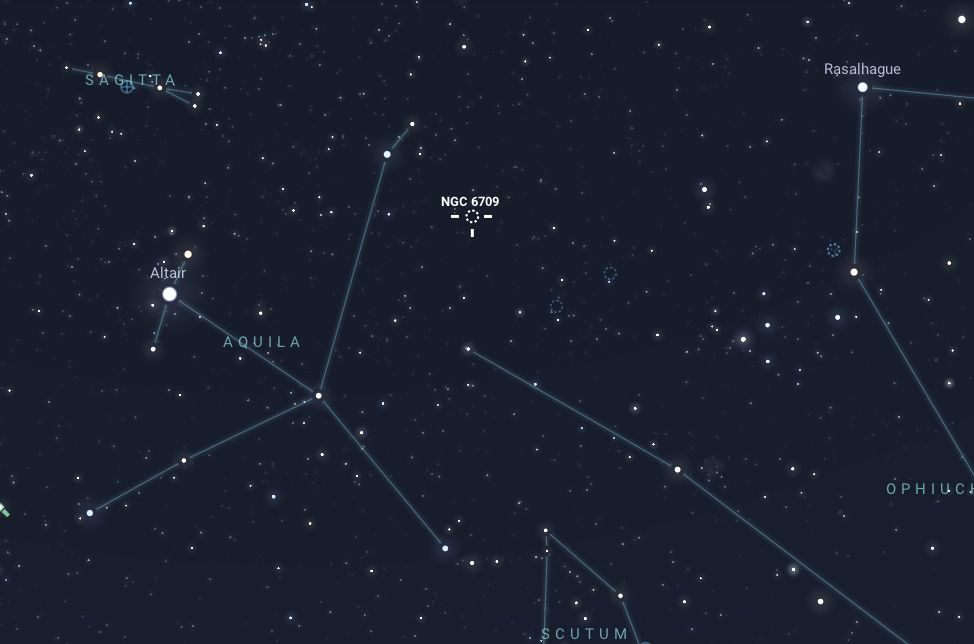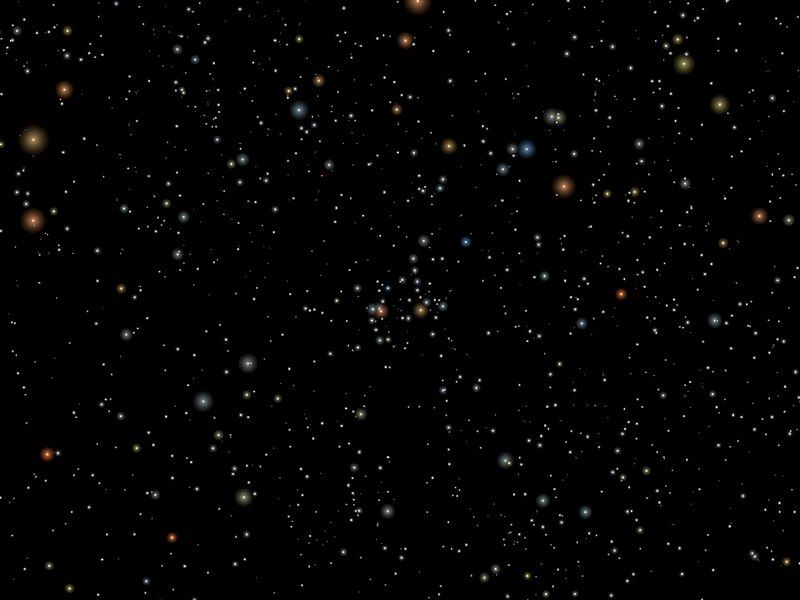NGC 6709 is an open star cluster located in the equatorial constellation Aquila (the Eagle). It can be observed from both the Northern and Southern Hemispheres during specific times of the year, depending on its position in the sky. This cluster was first discovered by the German-born British astronomer William Herschel in 1784. It was later catalogued in the New General Catalogue (NGC), compiled by John Louis Emil Dreyer in 1888, becoming an object of interest for both professional and amateur astronomers.
Physical Characteristics
NGC 6709 is a relatively young open star cluster, estimated to be about 150 million years old. Open clusters like this are loose groupings of stars that formed together from the same molecular cloud. The cluster lies approximately 3,500 light-years from Earth and consists of several hundred stars, predominantly young, hot blue stars. These stars remain gravitationally bound and are located in close proximity to one another, making the cluster stand out against the background of the Milky Way.
Visual Appearance
The apparent magnitude of NGC 6709 is approximately 6.7, which makes it too faint to be seen with the naked eye, even under dark skies. It is best observed with binoculars or a telescope, where it appears as a compact and bright grouping of stars. When viewed with a wide field of view, it is particularly striking, set against the dense star fields of the Milky Way, enhancing its visual appeal for observers.
Observation
NGC 6709 is well-placed for observation from both hemispheres due to its location near the celestial equator. In the Northern Hemisphere, it is best observed during the summer and early autumn months, from June to October, when it reaches its highest altitude in the evening sky. In the Southern Hemisphere, it is ideal for observation during the winter months, from June to September, when it is similarly high in the sky.
To locate NGC 6709, look toward the constellation Aquila, which hosts the bright star Altair, one of the vertices of the Summer Triangle asterism. From there, guide your optics to the cluster’s position.




